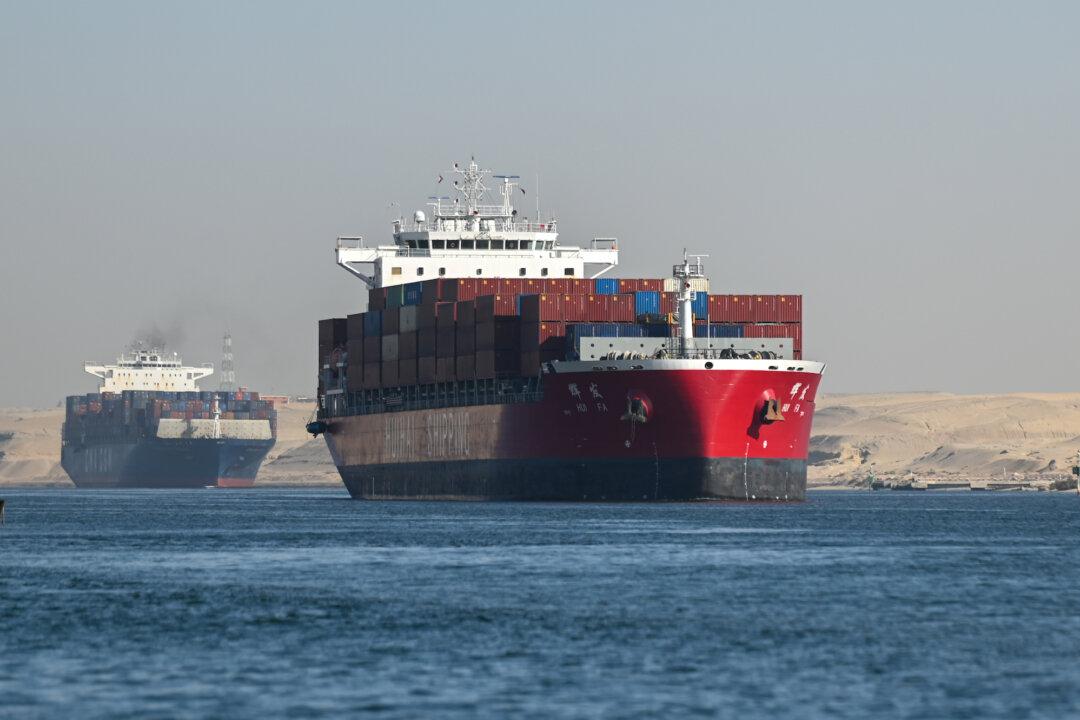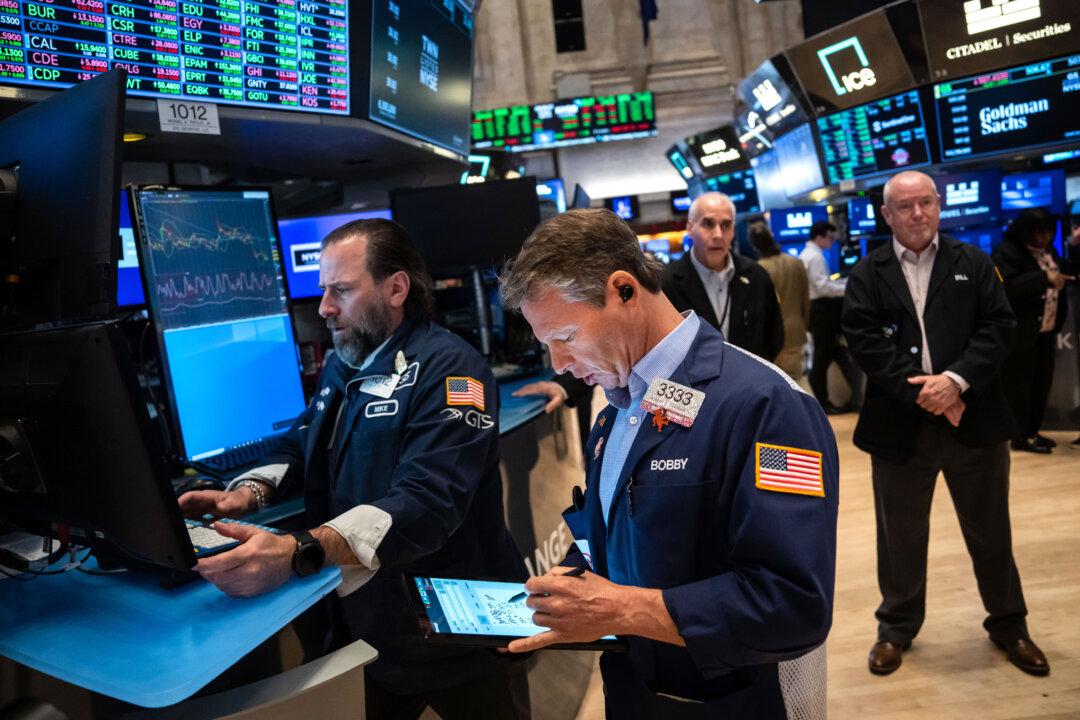Crude oil prices rallied on Jan. 12 after the United States led air strikes against the Iran-backed Houthi rebels in Yemen in retaliation for attacks on ships in the Red Sea.
West Texas Intermediate crude futures surged by as much as 4.2 percent to above $75 per barrel on the New York Mercantile Exchange. Brent, the international benchmark for oil prices, also advanced by 4 percent to top $80 a barrel on ICE Futures Europe.
Other energy commodities popped because of the news, including natural gas, climbing close to 3 percent.
As part of efforts to deter additional attacks on vessels in the Red Sea, U.S. and British forces initiated joint strikes on a dozen targets in Yemen used by the Houthis. The waterway is a vital shipping route for petroleum products from the Persian Gulf to the United States and Europe.
The conflict has reignited supply concerns that may be countering the weak demand narrative that has been prevalent in recent months, according to Phil Flynn, an energy strategist at The PRICE Futures Group. At the same time, it’s more of a transportation issue that will lead to delays and disruptions, he told The Epoch Times.
“We have the Red Sea and our most important shipping route, Bab el-Mandeb Strait. But if this gets into the Strait of Hormuz, that’s a whole other issue,” he said, adding that if Iran gets dragged into this, “now you’re talking potential risk to production.”
“The market has to keep that in the back of your mind,” Mr. Flynn added.
For now, transporting crude oil might be the most significant contributor to the sharp increase in energy prices. That comes as Iran seized an oil tanker carrying 1 million barrels of Iraqi crude in the Gulf of Oman.
Mr. Flynn cited new shipping data that confirms at least four oil tankers have been diverted from the Red Sea immediately following the U.S.-led attacks.
According to energy economist Anas Alhaji, the “nightmare scenario” isn’t an attack on oil or liquefied natural gas tankers but rather an attack on oil tankers in the middle of Bab el-Mandeb Strait.
“There are hundreds and hundreds of islands, and most of the water is shallow, and the shipping lanes basically are really tight,” Mr. Alhaji said during a Jan. 12 Spaces session on X, previously known as Twitter. “If you have a major problem there and you have a major oil spill, that lane would be closed, and if it is closed, we lose about 5 to 6 million barrels a day of oil.”
On the other hand, the more likely scenario is that the Houthis aren’t going to escalate their attacks and that any damage to facilities will emanate from individuals and smaller groups that are “loosely affiliated with Iran.”
For now, the effect on oil prices will be “limited,” and without further issues, there could be a pullback in the market, he added.

Mr. Flynn agrees.
Effect on Shipping
Last week, the Houthis carried out a series of drone and missile attacks on container ships in the Red Sea, which connects Asia and the Middle East to Europe through the Suez Canal and the Bab el-Mandeb Strait.Estimates suggest that about $1 trillion of goods are transported in the area every year.
Since the Oct. 7 attack by Hamas terrorists on Israel, the Houthis have been engaged in a constant barrage of attacks. That’s forced several companies, including shipping and logistics giant Maersk, to pause all trips through the Red Sea and Gulf of Aden. A majority of container ship traffic has been diverted south around the Cape of Good Hope, with volumes tumbling by 61 percent to an average of six vessels a day.
“While we continue to hope for a sustainable resolution in the near future and do all we can to contribute towards it, we do encourage customers to prepare for complications in the area to persist and for there to be significant disruption to the global network.”
Following the Jan. 11 military response, all ships have been advised to avoid the region. The events have pushed up freight rates, according to John Kartsonas, a managing partner at Breakwave Advisors.
“The increasing distance adds almost 2 weeks to the voyage and, depending on how long the disruption lasts, will have a positive impact on shipping rates,” Mr. Kartsonas said in a statement.
“Containership rates have now doubled in the last two months. Tanker rates have had a more muted reaction, but it might be the case that they will react going forward given the new information.”
Global Crude Demand
Since late last year, the storyline in energy markets has shifted to demand concerns from supply issues. However, that narrative could unravel amid higher economic growth forecasts and rising crude demand projections.“Much of the growth [in oil demand] will be coming in the second half of the year,” Alan Gelder, senior vice president of research at Wood Mackenzie, said in a statement. “This will be fueled by improving economic growth and lower interest rates.”
China is projected to account for one-quarter of the increase.
China’s fourth-quarter gross domestic product (GDP) growth rate is forecast to rise 5.3 percent year-over-year. If accurate, this would be up from 4.9 percent in the July-to-September span.
Rob Thummel, a senior portfolio manager and managing director at Tortoise, said he expects global GDP growth to increase crude demand by as much as 2 million barrels per day.
There will be several drivers in the coming year, mainly geopolitical risks and compliance to production cuts by allies of the Organization of the Petroleum Exporting Countries, known as OPEC+.







